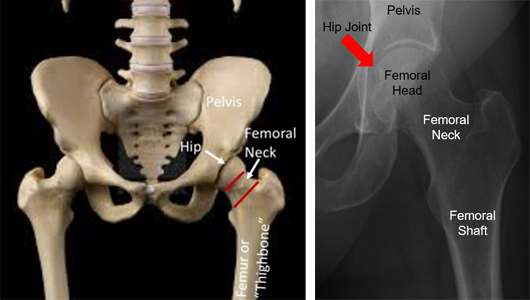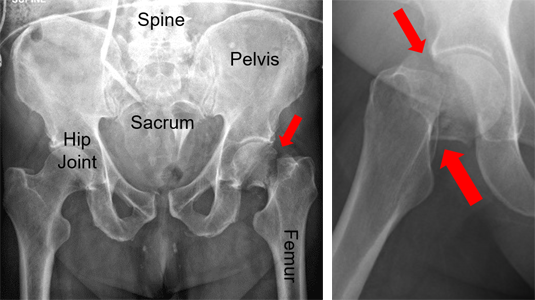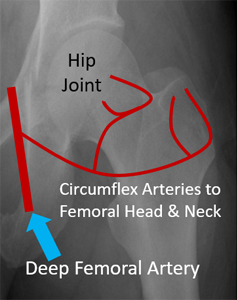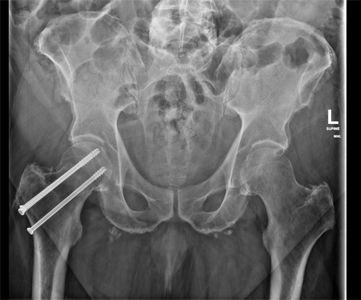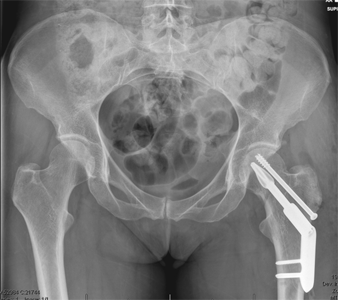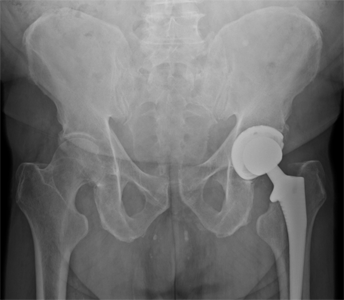Physical Therapy Videos - Hip and Pelvis
What Is It?
A broken hip is also called a femoral neck fracture. Your hip joint has two bones: the thigh bone (femur) and the hip socket(acetabulum). The hip joint is like a ball and socket that lets you bend your leg when you walk. When the hip breaks between the ball and the top of the thigh bone, it's called a femoral neck fracture (see Figure 1).
How It Happens
Broken hips in young people usually happen because of a big accident, like a car or motorcycle crash or a fall from high up. People younger than 60 with strong bones are considered "young" because their hips break differently than older people with weaker bones.
First Steps
A broken hip hurts a lot and makes it hard to walk. When you break your hip, you're usually taken to the emergency room in an ambulance. At the hospital, you'll get x-rays of your hip and maybe your thigh bone. You might also need a CT scan to see the broken bone better. Your doctor might use traction to help with your pain. Traction gently pulls on your leg until you can have surgery. You'll need to stay in the hospital for care and pain medicine.
Treatment
Broken hips usually need surgery. The main worry is if the hip will heal because the blood supply to the femur head might be broken too. There are different implants that can be used to fix the broken hip, depending on the person and the fracture.
Recovery
After surgery, you'll work with a physical therapist in and out of the hospital to get stronger and walk normally again. Your surgeon will tell you how much weight you can put on your injured leg. You might need a blood thinner to prevent blood clots. Blood thinners and walking early help stop blood clots. You'll get different pain medicines, with the goal of using non-addictive ones. After a short stay, you'll leave the hospital. You might need to go to a rehab or nursing facility. You'll see your surgeon a few weeks after surgery. It's important to follow their instructions. After surgery, you might need help, like a walker or cane, until you heal. Physical therapy helps you walk normally again. The therapist will help you with strength, stretching, and endurance. To recover as fast as possible, keep doing the exercises you learn in therapy at home.
Long Term
There can be problems after a broken hip, but they don't happen often. These problems can be blood clots, infections, trouble walking, or a limp. Long-term risks include your bone not healing right, painful implants, and arthritis. There can also be problems with joint replacements, like dislocation, fracture, or legs of different lengths. Sometimes, more surgery is needed for these problems.
Physical Therapy Videos - Hip and Pelvis
More Information
---
Justin Haller, MD
Edited by the OTA Patient Education Committee
X-rays and images from the personal collection of Dr. Haller and Christopher Domes, MD

